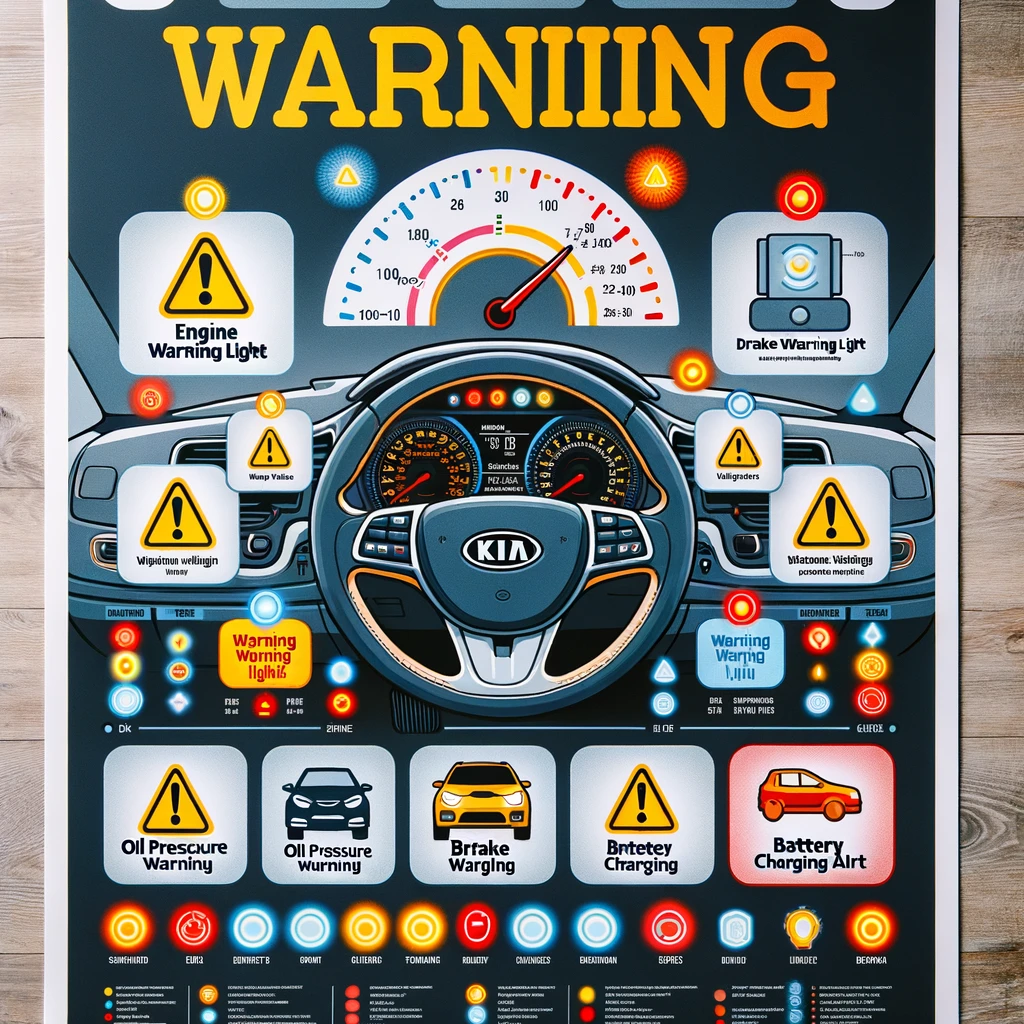Navigating the world of car maintenance can seem daunting, especially when the dashboard lights up with symbols that are unfamiliar. This guide provides a thorough understanding of Kia warning light symbols, equipping Kia owners with the knowledge needed to identify and address these alerts confidently. By recognizing these signals early, you can take preventive measures to maintain your vehicle’s health and ensure your safety on the road.
Engine Warning Light
The engine warning light, often displayed as an engine outline or the text “Check Engine,” is one of the most critical alerts on a Kia dashboard. This light can signify anything from a minor issue like a loose gas cap to more severe problems such as a malfunctioning catalytic converter. When this light comes on, it is advisable to check the simplest possibilities first, such as ensuring the gas cap is tight. If the light remains on, it’s essential to conduct a diagnostic scan to pinpoint the exact issue. Ignoring this light can lead to significant engine damage and decreased performance, resulting in expensive repairs.

Oil Pressure Warning
The oil pressure warning light, typically depicted as an oil can symbol, indicates that the oil pressure in the engine is too low. This situation can be caused by low oil levels, a failing oil pump, a leaking oil filter, or blockages in the oil system. It is crucial to stop driving immediately and turn off the engine if this light illuminates to prevent engine damage. Checking the oil level and refilling if necessary may resolve the issue, but if the light persists, it could indicate a more severe problem requiring professional attention.
Brake System Warning Light
The brake system warning light is a critical indicator that something is wrong with your vehicle’s braking system. This light can appear as an exclamation mark in a circle and may be accompanied by the ABS light if the issue relates to the anti-lock braking system. Common causes for this light include low brake fluid, worn brake pads, or problems with the brake system components. Ensuring that your brake system is functioning correctly is vital for your safety. Immediate inspection and repair by a professional are recommended when this light appears.
Battery/Charging Alert
The battery/charging alert symbol, often shown as a battery, signals issues with the vehicle’s charging system. It could indicate a failing battery, problems with the alternator, or poor connections in the electrical system. A malfunctioning charging system can affect the vehicle’s ability to start or run properly. It is advisable to have the electrical system checked if this light remains illuminated. Regular maintenance and checks can help prevent such issues and ensure that your vehicle’s electrical system is reliable.
Temperature Warning Light
The temperature warning light, displayed as a thermometer submerged in water, indicates that the engine temperature has exceeded normal limits. This could be due to a variety of issues, such as low coolant levels, a malfunctioning water pump, or a blocked radiator. Driving with an overheated engine can cause significant damage, including a blown head gasket or a seized engine. If this light comes on, it is crucial to stop the vehicle and let the engine cool down before checking the coolant level and addressing the issue to prevent further damage.
By understanding what each warning light on your Kia dashboard signifies and how to respond, you ensure your vehicle’s longevity and safety while driving. Regular vehicle maintenance can help prevent these lights from coming on and give you peace of mind on the road.